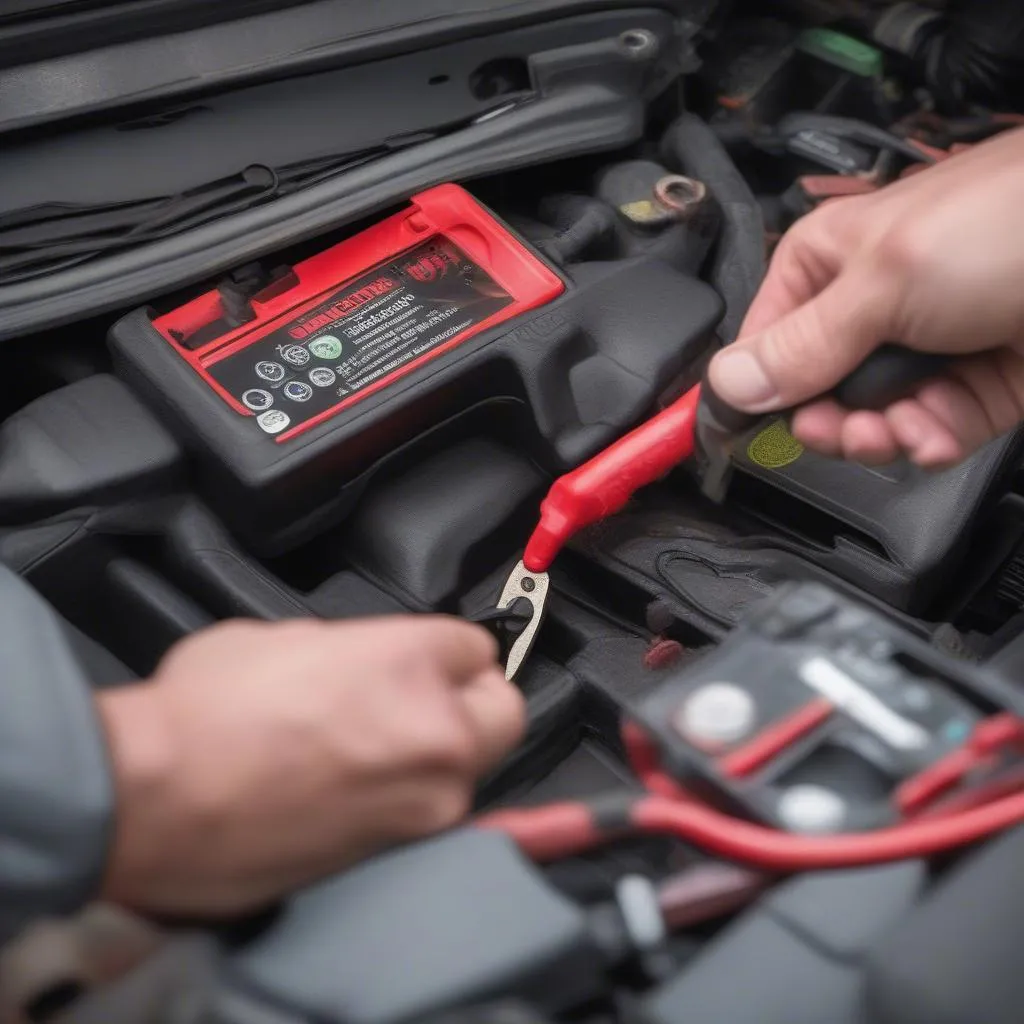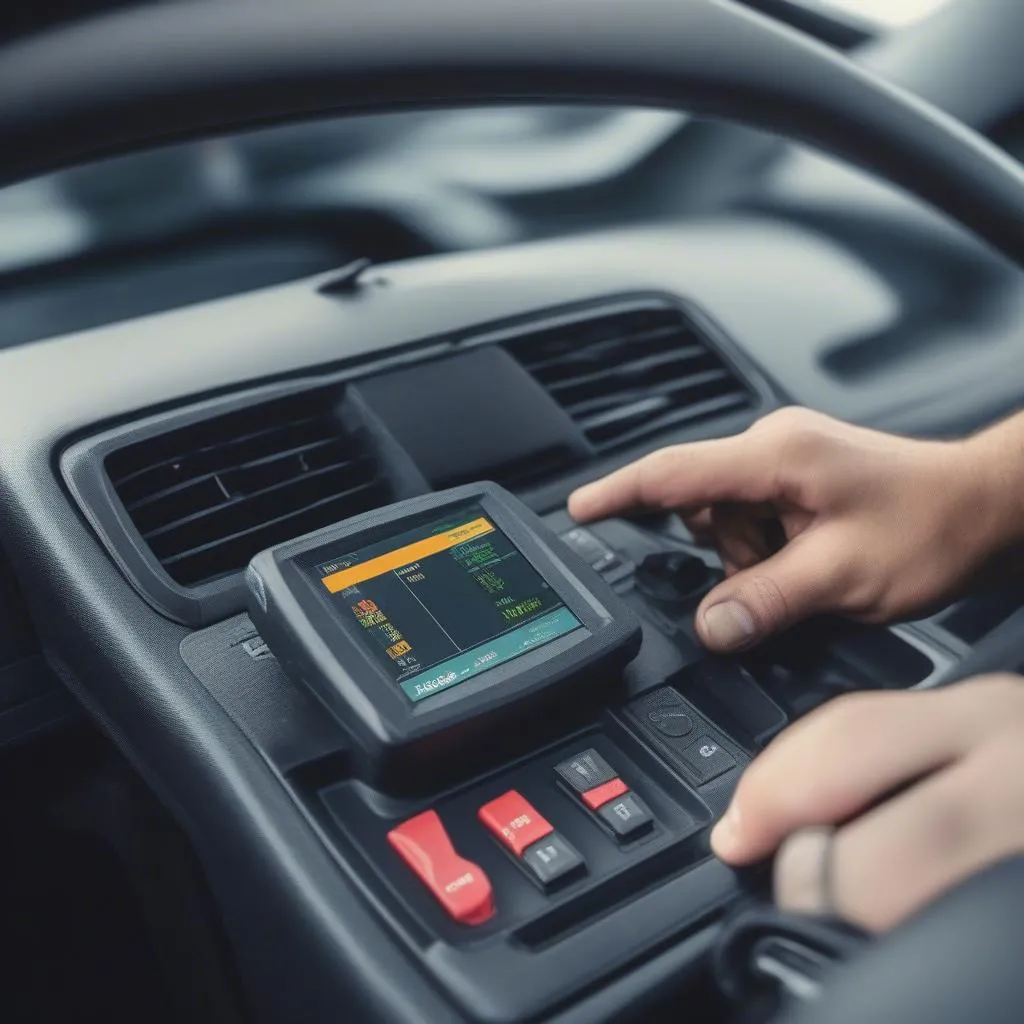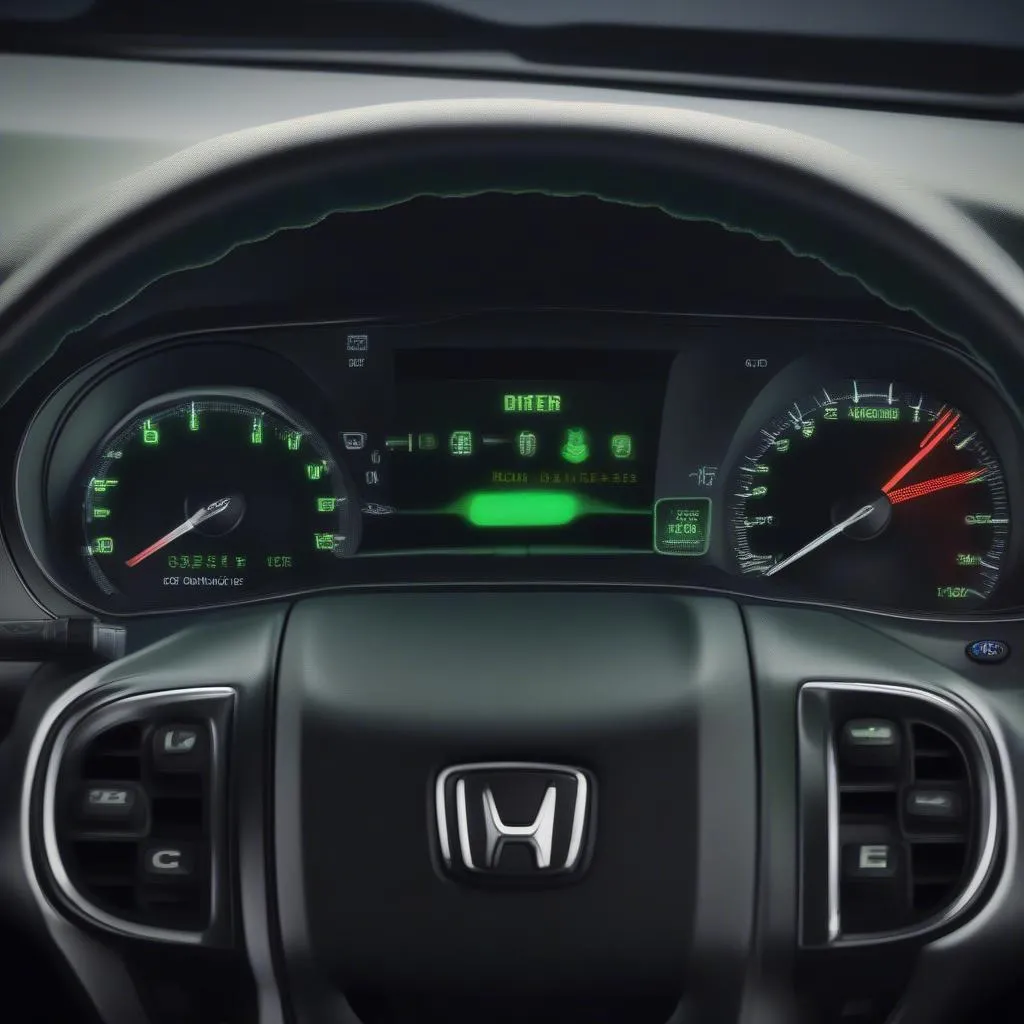A malfunctioning anti-theft system can be a major headache, leaving you stranded with a car that won’t start. If you’re experiencing issues with your 2006 Mazda Tribute’s anti-theft system, you’re in the right place. This guide will walk you through some potential solutions to get you back on the road.
Understanding Your Mazda Tribute’s Anti-theft System
Before we delve into the reset process, it’s helpful to understand how the system works. The 2006 Mazda Tribute uses an immobilizer system that prevents the engine from starting without the correct key. When you insert your key into the ignition, a transponder chip inside communicates with the vehicle’s immobilizer control unit. If the signals don’t match, the engine won’t start.
Common Signs of Anti-theft System Issues
Several indicators might point to a problem with your Mazda Tribute’s anti-theft system:
- The “Security” or “Theft” light flashes rapidly when the key is in the “ON” position. This is one of the most common signs of an issue.
- The engine cranks but doesn’t start. You might hear the starter motor engaging, but the engine won’t turn over.
- The key fob doesn’t work to lock or unlock the doors. While this can be due to a dead battery in the fob, it can also be a symptom of a larger anti-theft problem.
What You’ll Need
- Your Mazda Tribute’s owner’s manual: This will have model-specific information and instructions.
- Both sets of keys: Attempting the reset with both keys can sometimes resolve the issue.
How to Reset Your 2006 Mazda Tribute Anti-theft System
Here’s a step-by-step guide to resetting your Mazda Tribute’s anti-theft system. Keep in mind that these methods might not work for all cases, and consulting a professional mechanic might be necessary.
Method 1: Using the Key Fob
- Unlock the driver’s side door manually using the key.
- Insert the key into the ignition and turn it to the “ON” position without starting the engine.
- Press and hold the “Unlock” button on your key fob for 10-15 seconds. Observe the security light; it should stop flashing.
- Turn the ignition to the “OFF” position and remove the key.
- Wait for 5-10 minutes, then try starting the engine.
Method 2: Disconnecting the Battery
- Disconnect the negative (black) terminal of the battery. Always disconnect the negative terminal first for safety.
- Wait for 15-20 minutes to allow any residual power to drain.
- Reconnect the negative battery terminal.
- Insert your key into the ignition and turn it to the “ON” position. Let it sit for a few minutes for the system to reset.
- Start the engine.
 Resetting Car Battery
Resetting Car Battery
FAQs: 2006 Mazda Tribute Anti-theft System
Q: Can a dead battery cause the anti-theft system to engage?
A: Yes, a weak or dead battery can sometimes cause the anti-theft system to malfunction. If your battery is old, consider having it tested and replaced if necessary.
Q: Will resetting the anti-theft system erase my car’s computer?
A: No, resetting the anti-theft system using the methods described above will not erase your car’s computer.
Q: I’ve tried everything, but my anti-theft system is still acting up. What should I do?
A: If the problem persists, it’s best to consult a qualified mechanic or an authorized Mazda dealership. They have the diagnostic tools and expertise to pinpoint and fix the issue.
 Car Diagnostic Tool Connected to a Vehicle's OBD-II Port
Car Diagnostic Tool Connected to a Vehicle's OBD-II Port
Need More Help?
For further assistance with automotive diagnostics, programming, and software-related issues, contact Cardiagtech. We provide cutting-edge solutions for all your vehicle’s electronic needs.
CARDIAGTECH offers a wide range of diagnostic tools and software that can help you troubleshoot and repair even the most complex automotive issues.
We hope this guide helps you reset your 2006 Mazda Tribute’s anti-theft system. Remember, if you are unsure about any step or if the problem persists, it is always recommended to consult a qualified professional.


